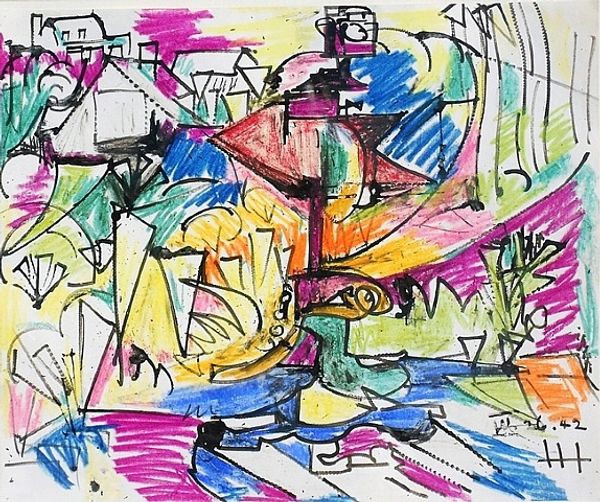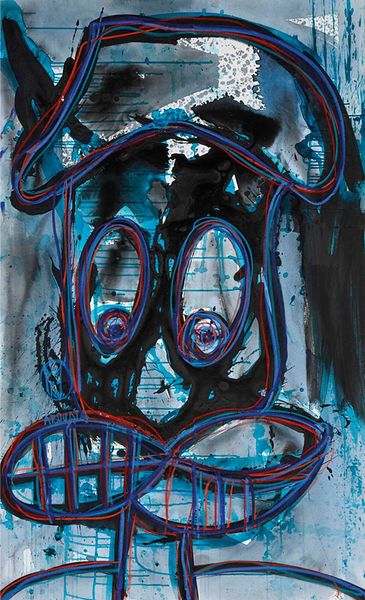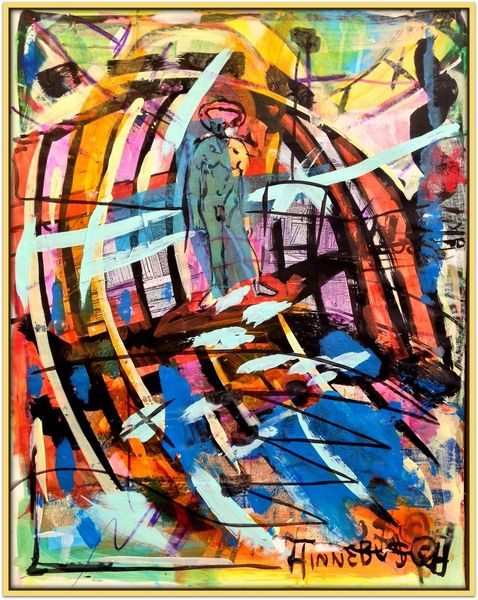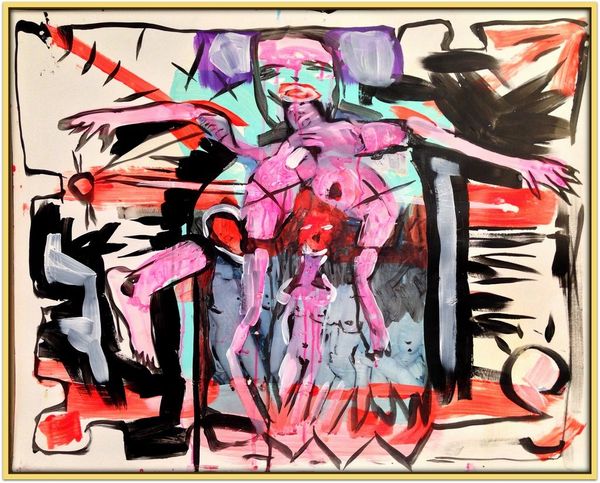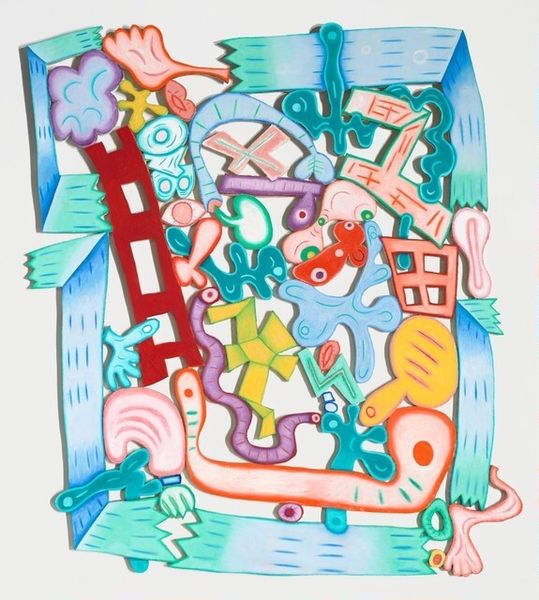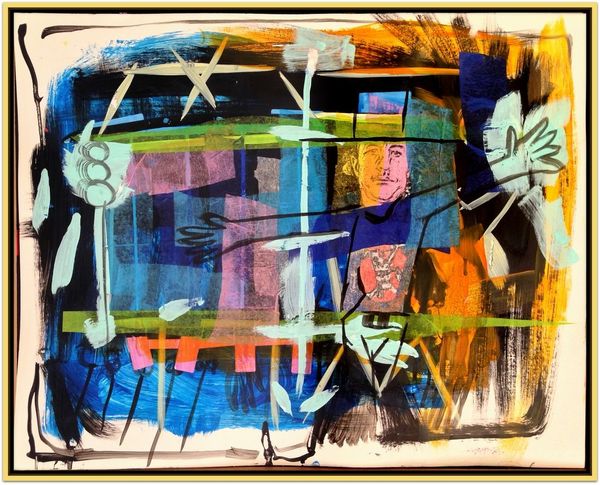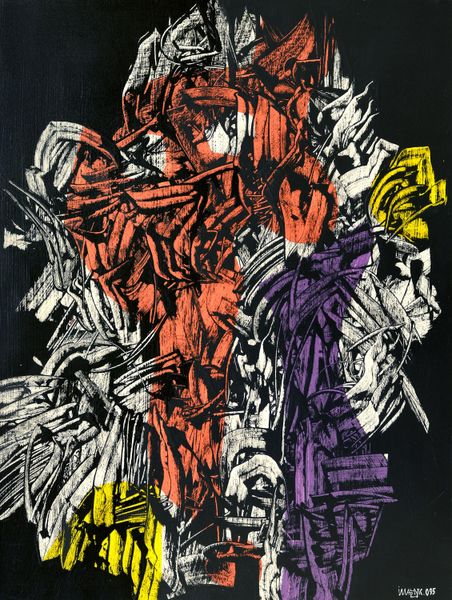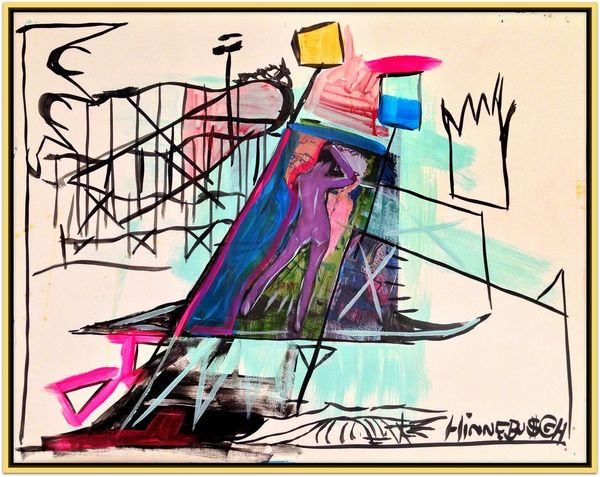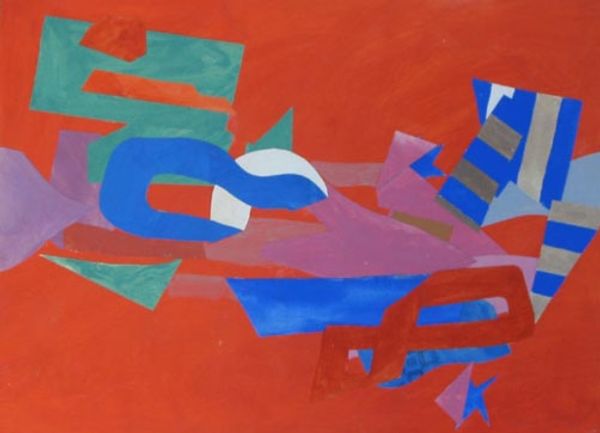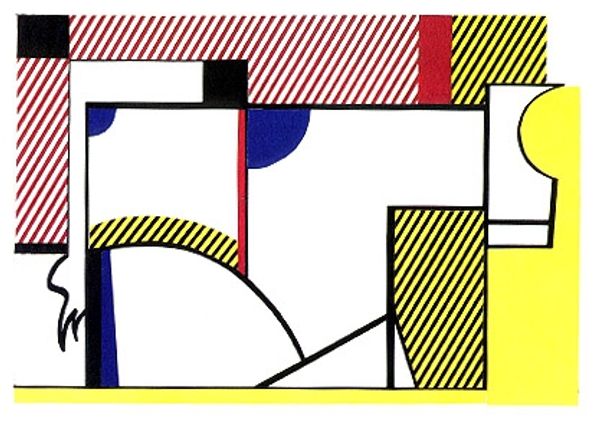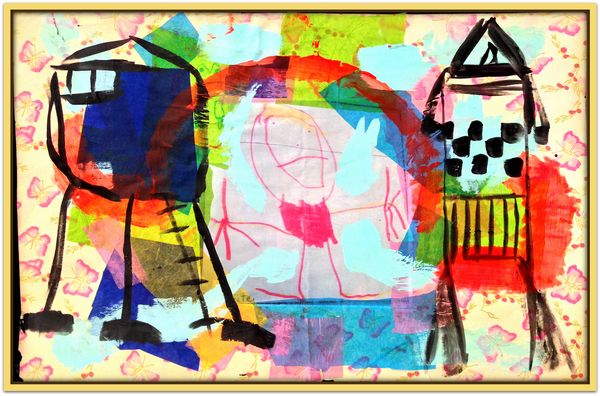
Dimensions: image: 1450 x 1230 mm
Copyright: © ARS, NY and DACS, London 2014 | CC-BY-NC-ND 4.0 DEED, Photo: Tate
Editor: So, this is Frank Stella's "Had Gadya: Back Cover." It's undated, but from Stella, so already intriguing! The geometric shapes feel almost…musical, like instruments jumbled together. What do you make of its chaotic energy? Curator: Chaotic is one word, yes! I see a playful deconstruction of form, a sort of visual jazz. Frank Stella was always pushing boundaries, flirting with the absurd. Does it perhaps evoke a feeling of joyous rebellion? Editor: I think so. It feels unfinished, like a jam session that could go anywhere. What's the story behind "Had Gadya"? Curator: "Had Gadya" is a cumulative Aramaic song sung at the end of the Passover Seder. Stella's series uses it as a springboard for abstraction. What do you think Stella is trying to tell us with these forms? Does it offer a new way of reading into traditional stories? Editor: Absolutely! I’ll definitely be looking at Stella differently now.
Comments
tate 6 months ago
⋮
http://www.tate.org.uk/art/artworks/stella-had-gadya-back-cover-t07153
Join the conversation
Join millions of artists and users on Artera today and experience the ultimate creative platform.
tate 6 months ago
⋮
Made by the American artist Frank Stella, Had Gadya: Back Cover is an abstract work on paper created using hand colouring as well as various printing methods. The hand colouring is distinctly visible in the three jagged blue-on-white forms in the lower part and left side of the composition, where Stella’s pen marks can clearly be seen. The bottom of the image is dominated by straight lines and rough edges and by shades of blue along with alternating black and white stripes, which collectively resemble a series of haphazardly arranged cones and cylinders shown from various perspectives. By contrast, the top third of the work is more open, presenting curved forms in black, orange and white. These include a crude black shape in the top left corner that resembles a flower and is overlaid with two yellow C-shaped lines. Stella has created a sense of depth by layering the shapes and spaces in the composition so that they overlap with each other and with the work’s pale blue border. This is a vibrant and energetic composition, which bustles with abstract forms that jostle for space and eschew order and symmetry.
